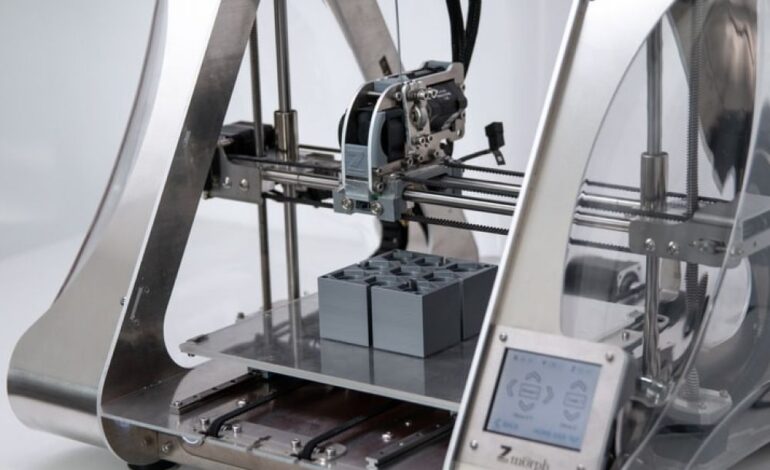How Could The Newest Trends In Applied Science Benefit The Society?

Everything that we use in everyday life has been a part of scientific research at some point Whether it is your phone, your pain medicine, or your perfume, the same applies for all. And even though it is not too visible to the public, for all things to work and to be considered safe, they have to go through a series of studies. These are just a few of the reasons why science is so valued by society.
To satisfy basic human needs and improve people’s living standards, science is vital. Funding research can appeal as unattractive to some people who focus more on the capitalist side of things. However, nothing can progress without the progress of science. And when there is new progress in science, it can be applied to numerous things which can benefit society.
If you would like to dig a little deeper into the world of applied science and its benefits to society, you have come to the right place. Read through the rest of this article to find out more.
Graphic design applications
Graphic design at its core stems from science. Of course, creativity is still the key to it, but it would not be possible without the technology and software it requires. In recent years, applied science has brought the 3D laser scanning technology, which has caught the attention of many graphic designers. It is a very useful tool for 3D scanning of any physical object. It has an amazingly high accuracy and the 3D models you can get from it are of very high quality. This technology makes it easy to reverse engineer anything. The best thing about it is that engineers do not have to sit for hours and draw to get the original design. With an ability to turn real-world objects into a digital form with high accuracy, this technology saves tons of time, as well as money.
Art applications
Most people find it odd when they hear that science can be applied to art. But, from those oil and acrylic paints to painting restoration, science is involved all the way. Scientists are constantly working on making paints of better quality, paints that dry faster and can stay stable for a long time. Moreover, with so many old paintings needing restoration and preservation, scientists are also trying to make improvements in that field as well. The end goal for all of these applications is to make sure that these art pieces stay the same for as many years as possible. This science application is so important that there are even college programs dedicated to creating professionals who can improve it.
Artificial cells
A few decades ago it sounded like science fiction, but today, it is slowly becoming reality. Even though cells are often called building blocks of life, it does not mean that they cannot be created synthetically. Bottom-up synthetic biology’s goal is to create artificial cells for various purposes. The way they do it is basically reconstructing the cells from their building blocks, or, simply said, from scratch. Even though this field of science is yet to be developed, the potential it has is remarkable. If artificial cells become possible to make, there could be numerous biomedical applications for them. From artificial blood cells, all the way to artificial organs, it will be truly exciting to see what all this field of science brings.
Plastic eating microbes
Well, just the title itself sounds not only exciting but incredibly timely and helpful for all of us. This is especially true nowadays, considering the fact that the pandemic has brought a new plastic source to our landfills – masks. In fact, if we add the effect of the single-use masks with other single-use plastic-based products – we are looking at a pretty grim future. Some predictions estimate that by 2050, our oceans will consist of as much plastic as there is fish, based on the weight.
The good thing is that with the help of applied sciences and some evolution at work – scientists have been able to find and isolate plastic-eating bacteria. It all started in 2016 when scientists in Japan discovered bacteria that can decompose plastic just outside a bottle recycling facility in Osaka. The issue is, they can only decompose a specific type of plastic, but nonetheless – this founding was revolutionary. In fact, this discovery has led to a huge undertaking by researchers all around the world, working with different microbes in the hope to develop the most efficient plastic-eating microbe.
Cancer treatment
Finally, as the last thing on this list, let’s talk about the newest trends in applied sciences that improve cancer treatment. The main problem with the chemotherapeutic agents that are used today for cancer is the fact that they are non-selective. In practice, this means that they attack the malignant cells, but the normal cells as well – which heavily impacts the health of the patient. This is exactly why scientists have been trying to find an alternative to the compounds used today. An exciting alternative lies in nanochemistry – the chemistry focused on the particles in the range of 1 to 100 nanometers.
Nanoparticle-based drug delivery has an abundance of advantages when compared to conventional drugs. More specifically, nanoparticles can be functionalized to be highly stable, biocompatible, and the most important – incredibly precise when it comes to targeting malignant tissue. The way in which this is done is by developing hybrid nanoparticles composed of both organic and inorganic matter, ensuring that they have all the desired characteristics of both a carrier system and a drug. Different nanoparticles are currently being developed for the purpose of battling cancer, and so far, the results have been extremely promising. In fact, there have been some experiments that have used nanoparticle-based cancer drugs for a 2 month period. During this period, no serious side-effects have taken place, and the cancer tissue was destroyed efficiently.
Needless to say, there is still research and development to be done for nanoparticles to completely replace the already existing drugs. In any case, this novel strategy has a lot of potential in helping society fight this incredibly vicious disease.

Finally, science is always evolving, and the applications are seemingly endless – we just have to wait and see. The majority of progress takes time, but, looking at these exciting examples, you have probably been able to see a glimpse of the future that awaits.










